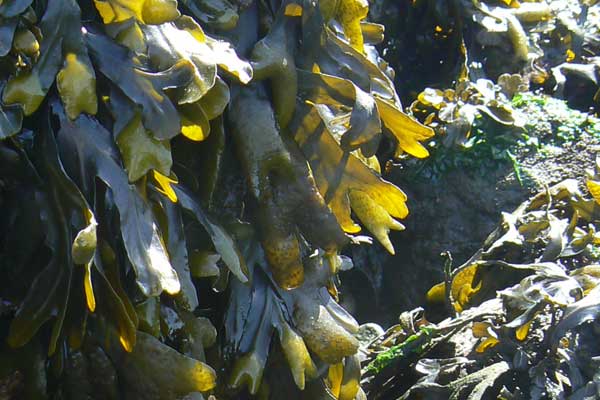Wherever there are rocks or pilings along the shore, you can find bunches of this greenish to yellowish brown seaweed. Especially in spring and summer its lush growth covers large areas.
In her book The Edge of the Sea Rachel Carson called these dense rockweed mats, "a fantastic jungle, mad in a Lewis Carroll sort of way" because of how they collapse in a messy heap when the tide goes out. When it returns, little inflated bladders at the tips of the rockweed blades float the seaweed up again. In that position, the blades are efficient about photosynthesis, just like plants on land. Even collapsed in a heap, rockweed plays an important role. Rachel Carson described collapsed rockweed as, "holding the wetness of the sea, and nothing under [its] protective cover ever dries out." Many marine creatures living on or under rockweed survive beneath this moist cover until the tide returns.
Rockweed itself has a terrific ability to endure being alternately covered by salt water and then uncovered and exposed to drying summer sun or freezing winter temperatures. Substances in its cell walls help keep moisture in and also make this seaweed's blades strong and flexible.
Each rockweed plant holds tight to its rock with a thick button at the base of its stem. Strong waves can't tear it free, but trampling by people will damage the blades — and all the creatures living on and under the rockweed. This seaweed is slippery too, so please avoid stepping on it when you explore the beach.

